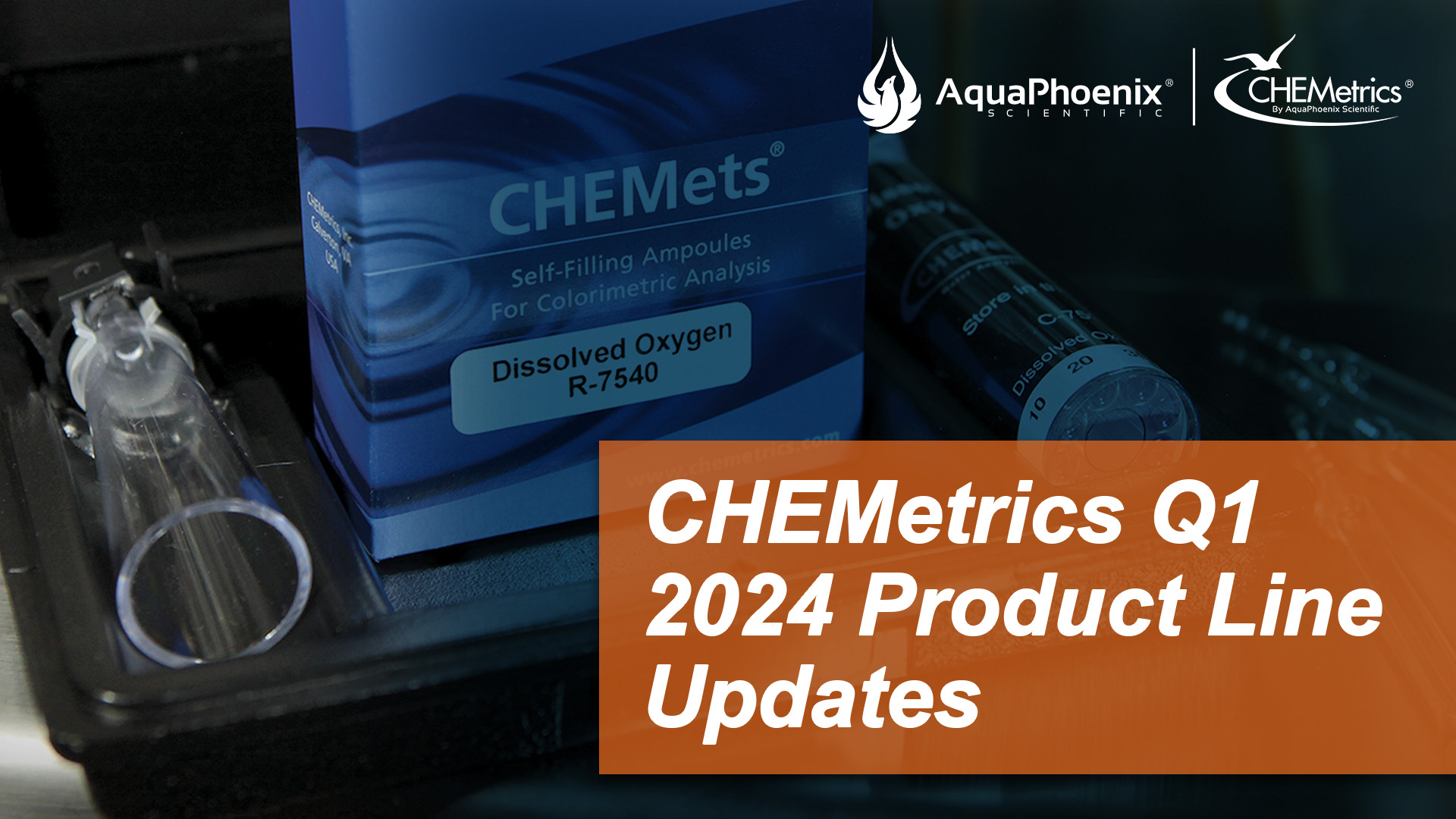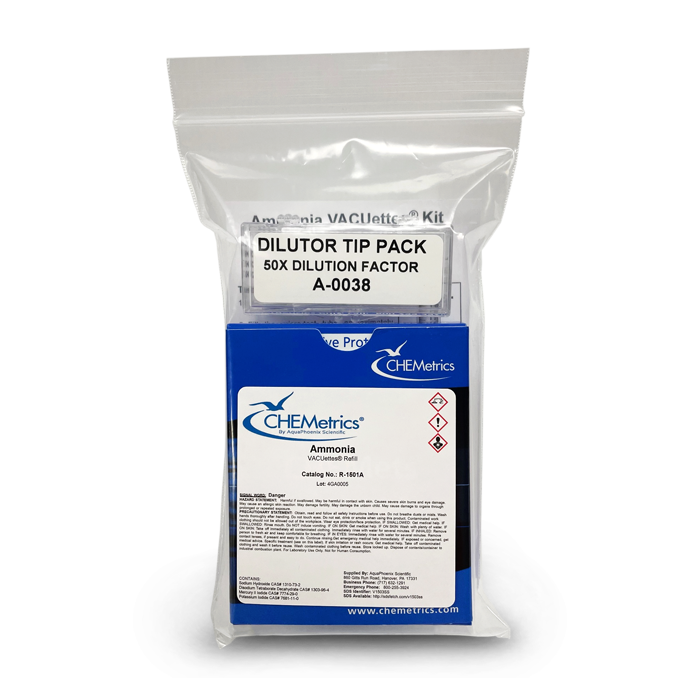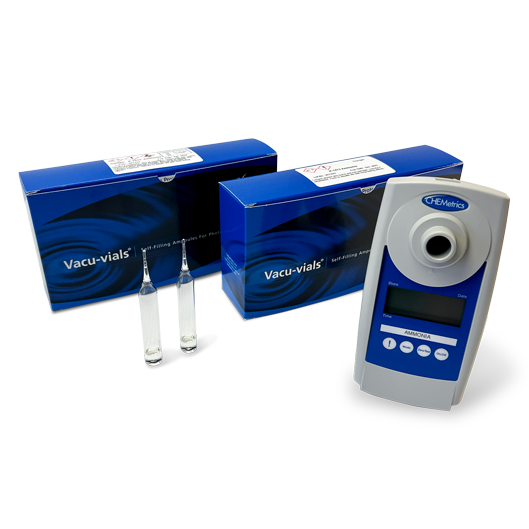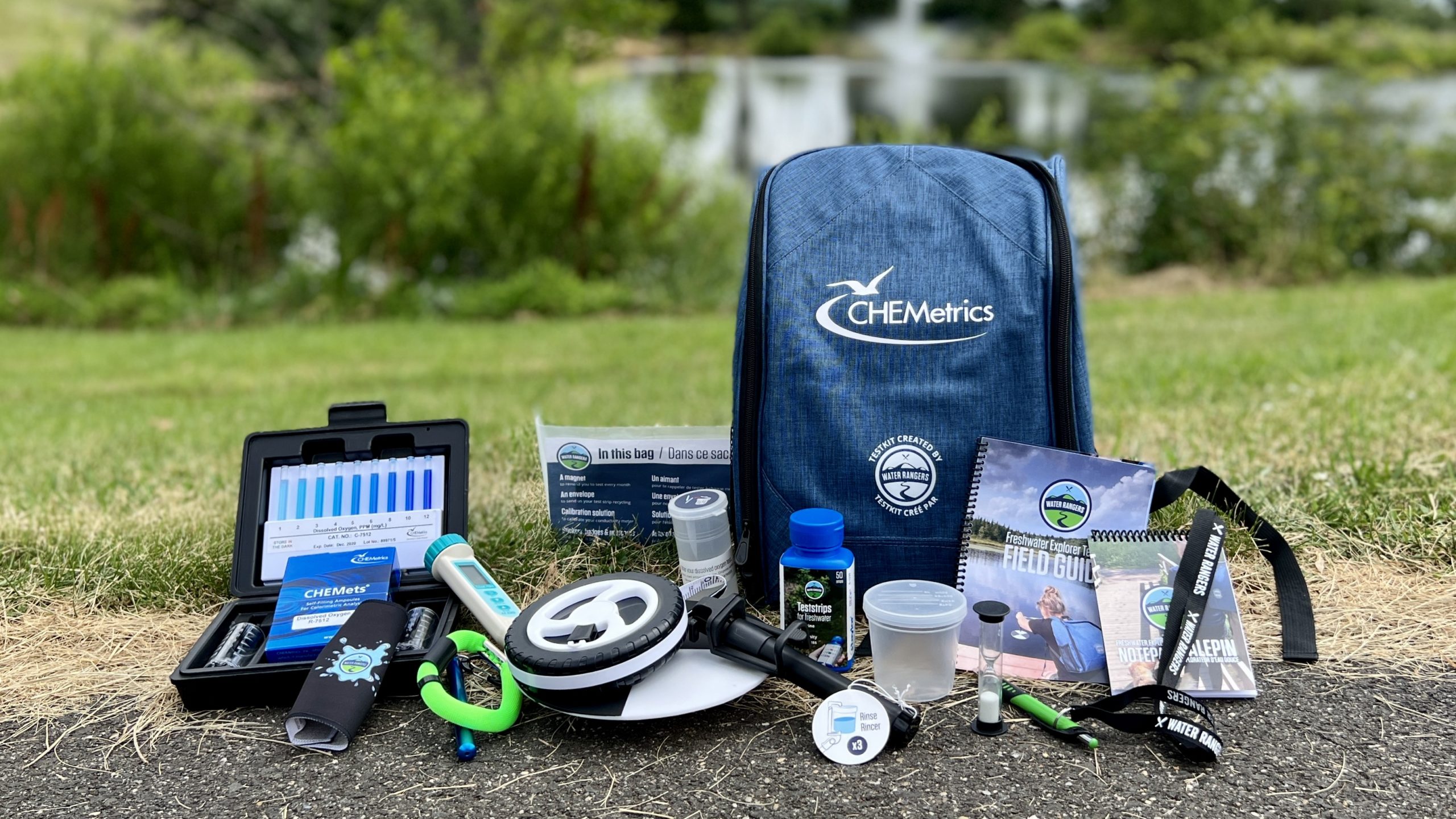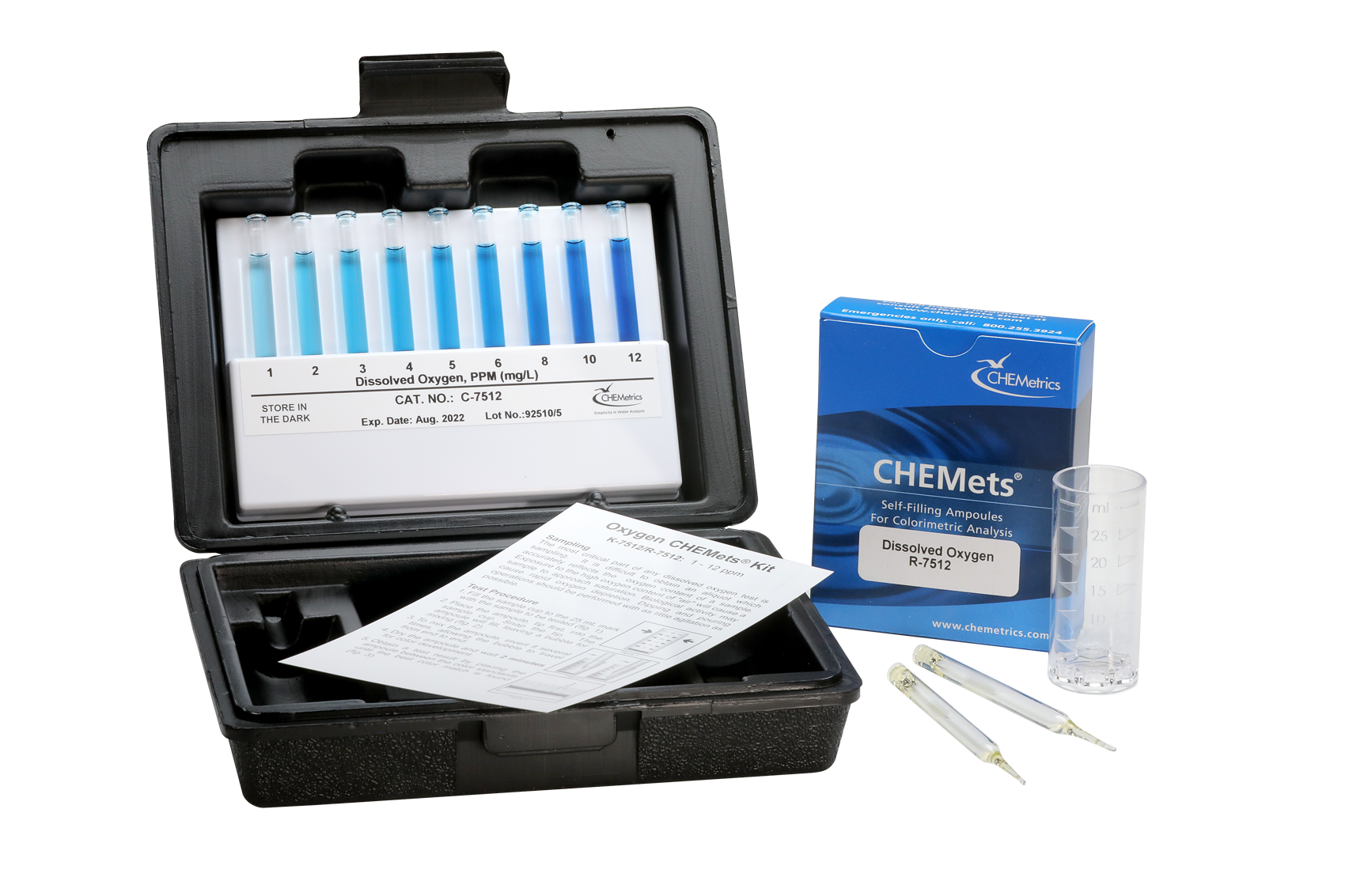Ammonia Test Kits Update The CHEMetrics Nessler Ammonia product line has been providing a reliable and straightforward means to measure ammonia in water for decades. The K-1503 and K-1523 Vacu-vials tests have been very successful, despite the limitation of the 2-month shelf-life. In September 2023 we addressed the short shelf-life of K-1503 by launching K-1513,…
Product Information
CHEMetrics Q1 2024 Product Line Updates
Introduction Q1 2024 was a busy time at CHEMetrics! We have made a lot of updates to our product lines and website to help increase our production flexibility, response time, order accuracy, and on-time delivery. These changes encompassed product labels, packaging, new products, and part # retirements. To help make sense of the different part number…
New Product: Test Kits for Corrosion Inhibitors Utilizing Rose Bengal Chemistry
Two New Filming Amine Test Kits Available CHEMetrics has developed new test kits utilizing the Rose Bengal chemistry for measuring residual corrosion inhibitors like film forming amines (FFA) in boiler systems. K-1013 features our Vacu-vials® ampoules and is compatible with a CHEMetrics V-3000 photometer or spectrophotometers that accept a 13mm round cell. Alternatively, a K-1013…
Upcoming Changes to CHEMetrics VACUettes® High Range Visual Colorimetric Tests
What is Changing? In the coming days you will notice a change to the packaging for all VACUettes products. The VACUettes capillary tips will no longer be attached to the test ampoule. Instead, the tips will now be supplied in a small plastic box packaged alongside the CHEMets refill containing the ampoules. If you are…
NEW A-2024 Ammonia Single Analyte Meter Now Available
A New Meter for Measuring Ammonia To provide even more convenient water testing options, CHEMetrics now offers the A-2024 Single Analyte Meter (SAM) for the measurement of ammonia in water. The A-2024 SAM is an affordable portable ammonia photometer designed to work with the currently available K-1413 and K-1513 Ammonia Vacu-vials test kits. Whether you…
New Monochloramine Water Analysis Test Kits
CHEMetrics is pleased to announce the release of two new test kits employing the hydroxybenzyl alcohol (HBA) method to measure monochloramine in water. These test kits are perfect for drinking water and wastewater testing applications in the field and lab. This method measures only monochloramine and expresses the results as ppm (mg/L) monochloramine as chlorine…
Introduction to Freshwater Monitoring and Water Rangers Products
Announcing A New Partnership At CHEMetrics, our goal is to deliver water testing tools and resources that are accurate, affordable, and easy to use. With that in mind, we’re proud to announce our partnership with the Canada-based Water Rangers organization. Water Rangers has created water testing kits designed for communities, schools, and passionate citizen scientists…
Environmental Dissolved Oxygen Testing: CHEMetrics Test Kits vs. Winkler Titration
Significance of Dissolved Oxygen in Aquatic Environments Measuring the concentration of dissolved oxygen (DO) in natural waters is vital in assessing the overall health of aquatic environments. While every ecosystem is different, water bodies need approximately 6 – 10 mg/L (ppm) DO to support aquatic life. Low dissolved oxygen concentration is a strong indicator that…
Turbidity and the Sample Zeroing Accessory Pack
Turbidity is haze or cloudiness in water caused by suspended matter. Turbid water is commonly described as hazy, milky, cloudy or dirty. High levels of turbidity usually indicate low water quality. A common field test to check for turbidity is to hold a flashlight up to the water sample. If the light makes the…
New Application Overview: Monitoring Dissolved Oxygen in High-Pressure Boiler Systems & Feedwater
Portable DO Test Kits Detect Trace Levels Application Note Many power plants use fossil fuels or nuclear power as sources of heat to boil purified water for the production of steam. The pressurized steam drives turbines to produce electricity. The quality of boiler feedwater must be carefully controlled throughout operations to optimize system performance. Proper…



